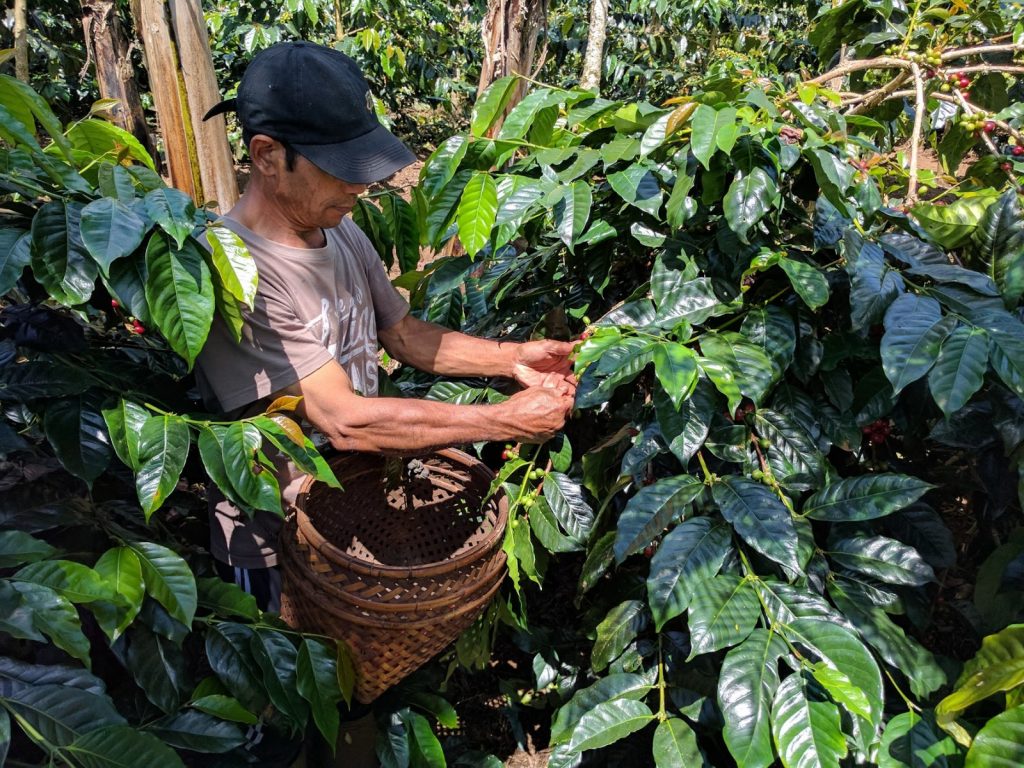Organic Blue Moon Kintamani Highlands Bali – Origin
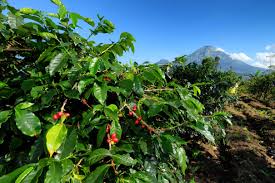
Blue Moon from Kintamani Highlands of Bali
Variety : Blue Bourbon, Typica
Altitude : 1100 – 1500 masl
Harvest: April – June
Organic certification
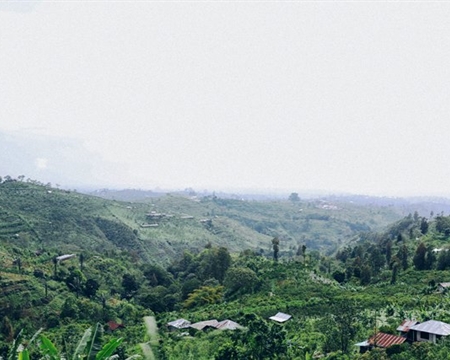
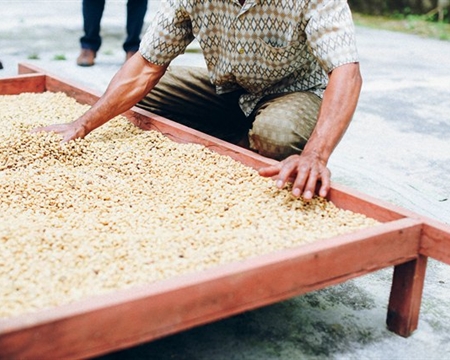
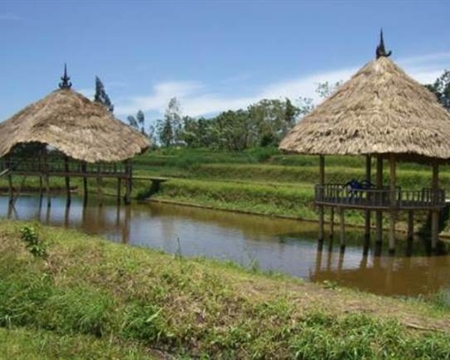
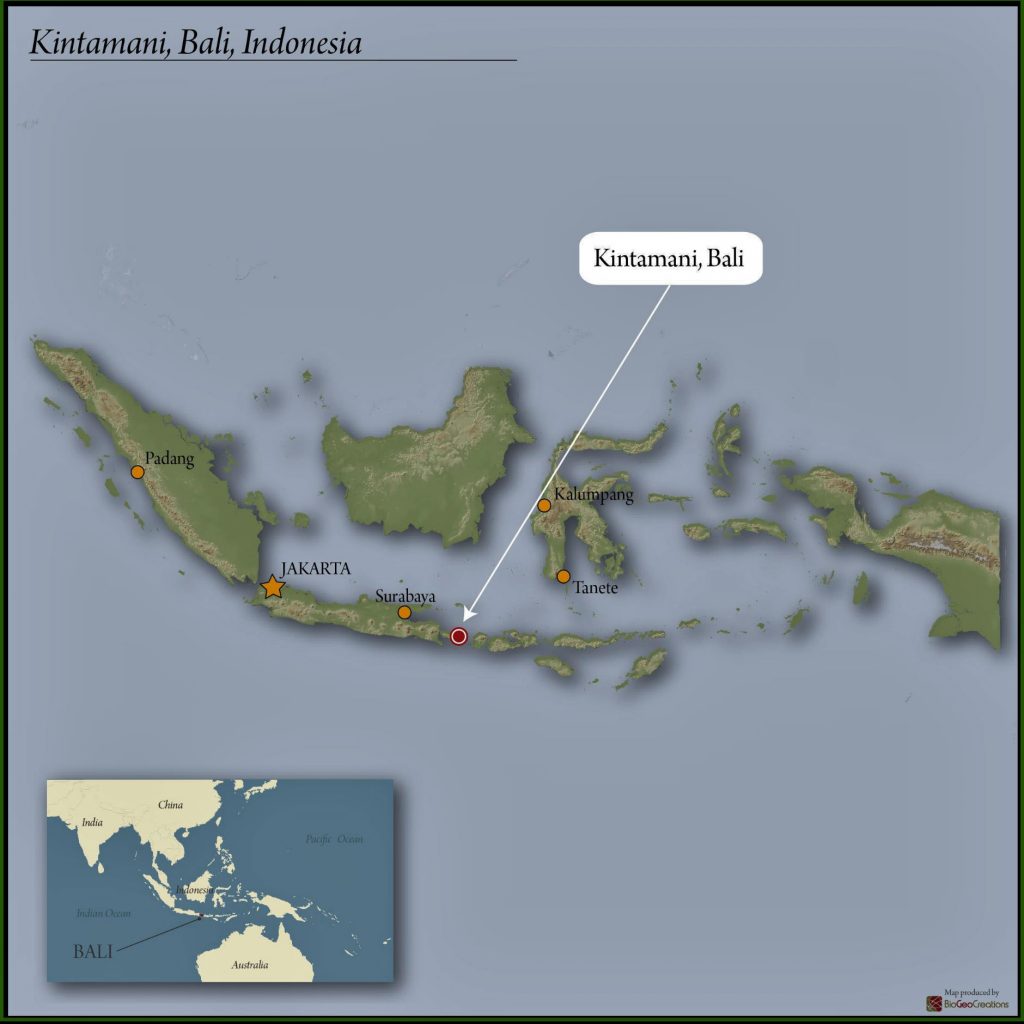
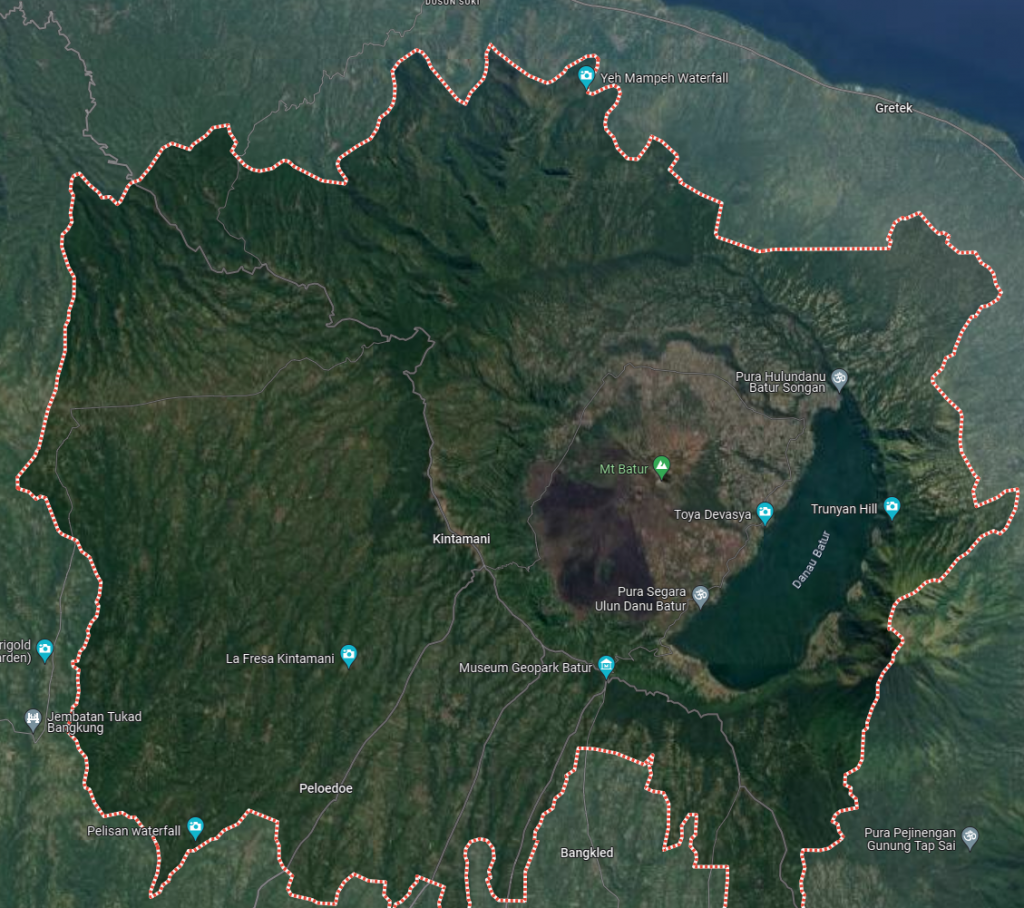
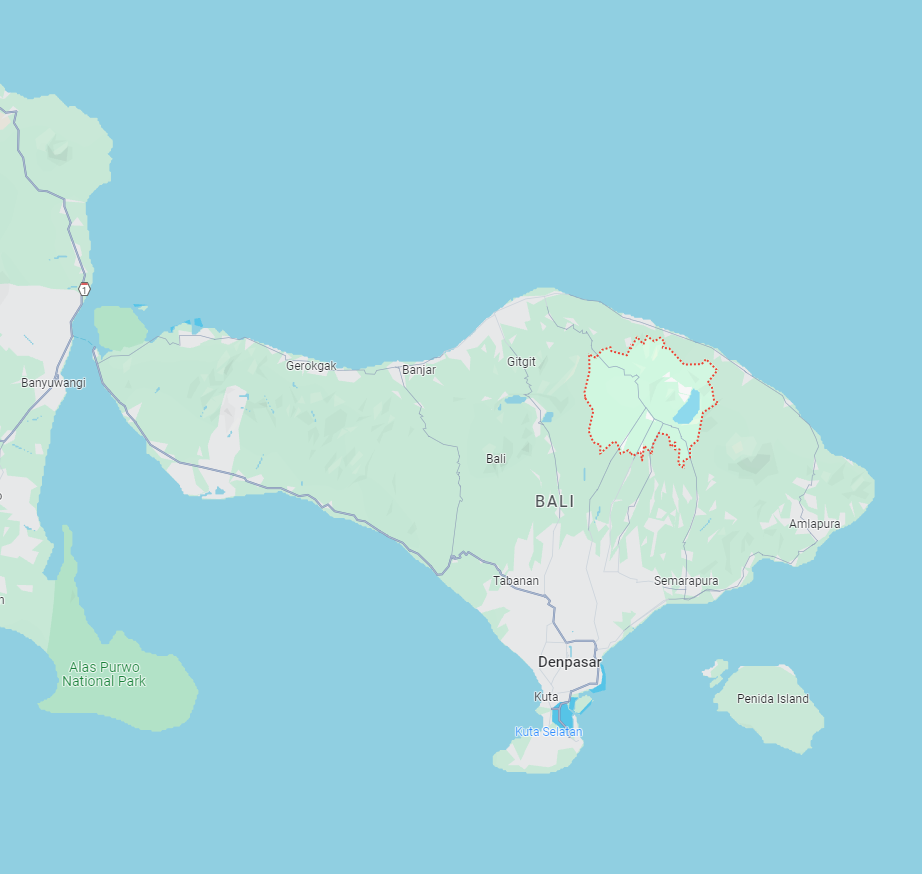
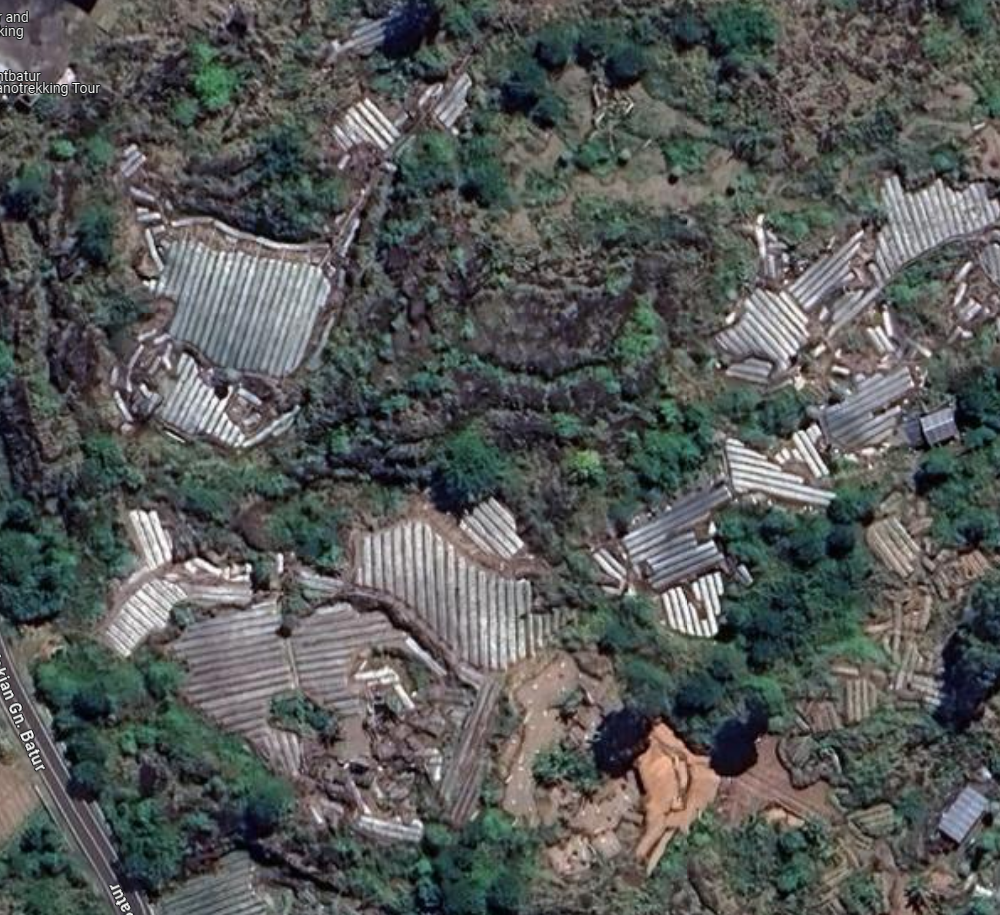
2024 April shipment
Cupping notes from vendor
Smooth and syrupy body with notes of baker’s chocolate, cedar, molasses, and vanilla.
Attributes (1-7) Flavors (1 -4)
| Brightness | 4 |
| Body | 5 |
| Aroma | 3 |
| Complexity | 5 |
| Balance | 4 |
| Sweetness | 6 |
| Spicy | 3 |
| Chocolaty | 4 |
| Nutty | 1 |
| Buttery | 1 |
| Fruity | 2 |
| Flowery | 2 |
| Winey | 1 |
| Earthy | 1 |
Process notes
Wet Hulled , Patio Dried
A good resource for process comparison (Natural, Washed and Wet Hulled)
This coffee processing variation, also called Giling Balash, was created in Sumatra and is now used throughout the Indonesian archipelago and even—experimentally—in some other countries. Wet-hulling is a rustic method that was invented as a way of drying the green bean more quickly in a rainy, wet environment. Similar to the washed process, the coffee beans are harvested, pulped, and fermented, then rinsed clean the next morning.
But all of this is done by hand, in buckets or baskets in farmers’ backyards, before being collected at a mill. The beans arrive only partially dried, at a pliable 40%–50% moisture, and with the parchment skin powerfully attached. To remove it, the hulling machines have to apply a lot of rough and tumble pressure, and the beans can get rather beat up—squashed and nicked. You can see this in the coffee as it dries a bit on a mat, a bit on the truck to Medan, and finally at the godown before export—even in your roasted beans at home. They may not be as pretty, but why should we care when the end result is our sumptuous Sumatra, or Sulawesi-Kalosi, thick with the syrupy body and spicy, herbal notes that the wet-hulling process brings out.
Not only do we love this cup for its inimitable flavors, we also love it because Mr. Peet was the man who made this type of coffee popular in the US. Somewhere between his Netherlands upbringing and his migration to Berkeley, he spent several years in Indonesia. At a time when coffees were fairly anonymous and Latin American beans dominated imports, Alfred Peet’s wet-hulled, dark-roasted Sumatra made quite the splash on the California coffee scene
Stories
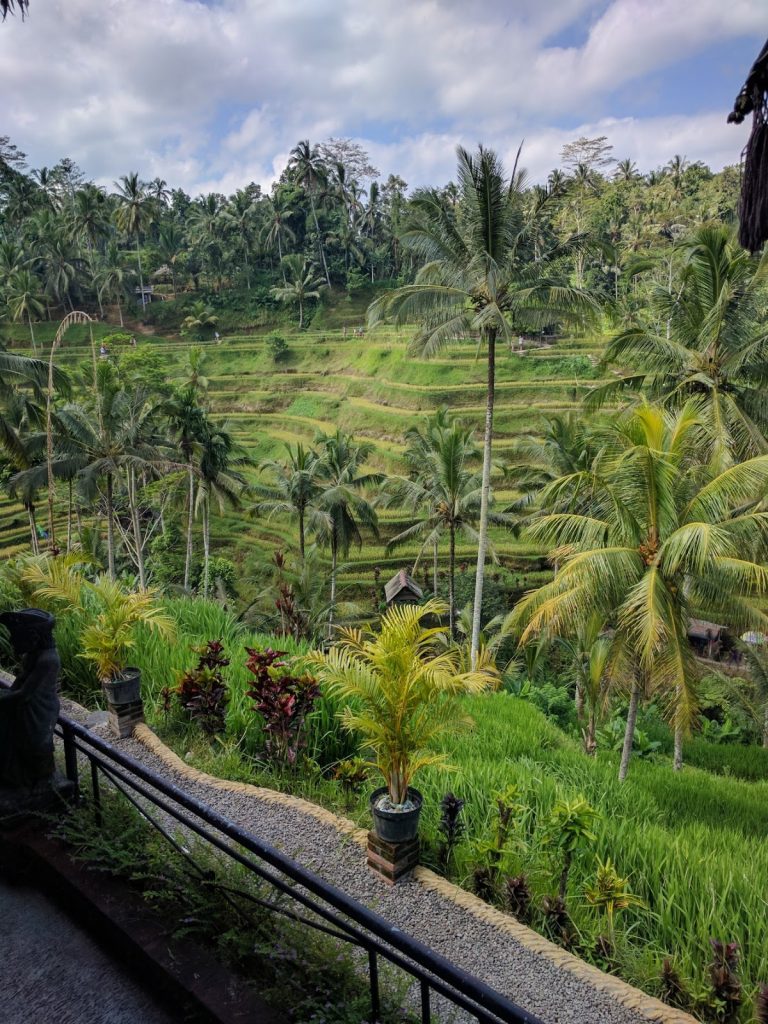
From CoffeeBeanCorral.com
A home roaster’s secret and a hidden jewel, our Bali Blue Moon’s birthplace has been heavily regulated by the Indonesian island’s government since the 1970s, which is a bittersweet situation––on the one hand, farmers may have less individual control over their crop. However, it also means the quality, handling, and processing are consistently excellent. Moreover, Bali experiences significant social, economic, agricultural, and technological enhancement because of this regulation. No matter what viewpoint you have, it can’t be denied that this complex bean is of high quality.
From electriccityroasters.com
The Kintamani highlands, where most Balinese coffee is grown, sits atop a large volcanic plateau. Coffee tree varieties include a high percentage of Bourbon and Typica, along with shade trees such as Erythrina, Albizia, Tangerine and Orange. The use of pesticides is prohibited on Bali and all fertilizers are 100% organic. The Subak Abian is a traditional farming structure organization in Bali, similar to a farmer cooperative. There are 13 different Subak Abians that are currently growing and processing coffee. The “SA” oversees both agricultural technology and religious activities. The promotion of improved coffee growing practices is expected to enhance not only agricultural technology but social and economic standing in Bali as well.
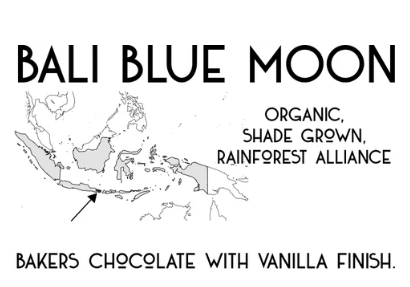

From perfectdaycoffee.net
This Jewel among coffees stands out with smooth body and overwhelming chocolate flavors.
The cup starts off with low acidity and smooth,overwhelming flavors of strong dark chocolate, The tanginess of black licorice, pepper, and a deep rich syrupy body with a variety of spice flavors that lead to an unforgettable aftertaste with hints of orange and grapefruit
In the early 1990’s, when the price of coffee was very low, several farmers began cutting their coffee trees to grow tangerines and oranges instead. Some of the farmers uprooted all of their coffee trees to make way for the new crops, while others planted oranges and tangerines between the rows of coffee trees. This provided shade cover for the coffee and provided the diversification needed to maximize the return from the land.
Farming techniques in Kintamani are relatively uniform. Manure is produced organically by cattle, goats and poultry on the farm and pesticides are never used. The population of coffee ranges from 1,111 to 2,000 trees per hectare. The farmers generally prune their coffee trees using a single stem system. They cut their trees at 180cm in height in order to ease harvesting. In this system, cherry quality depends on branch management; better pruning yields higher quantities of high quality cherries.
Harvesting begins in May or early June and ends in September or early October. After picking the cherries, the farmers sort through to pick out cherries that do not meet their quality standard. After sorting, the outer skin of the cherries is removed by the pulping machine. Then the pulped coffee is put into a fermentation tank for 24-36 hours. After washing, the coffee is sun-dried on patios and drying racks.
Coffee farmers in Kintamani are strongly organized through Subak Abian (SA), a traditional structure of farmer organization in the upland areas of Bali. SA plays an important role not only in agricultural activities, but also in religious activities. Founded on the Hindu philosophy of “Tri Hita Karana” (The three causes of happiness), a great importance is placed on the relationship of the individual to God, to other people, and to his or her environment. Each SA democratically establishes its own written rules,“awig-awig,” and also works to form village cooperatives.
From burmancoffee.com
An incredibly special coffee from a special place. Bali is different, in a good way. It cannot get any more beautiful, with perfect weather creating the perfect growing conditions for almost any plant. Everything is so lush and green year round. Three volcanoes nestled in the middle of this fairly small island, are at a perfect altitude for coffee, a bit more acidic soil as well which coffee tends to love. Produced by people who live harmoniously with the land. An incredible sight to see and a real treat to drink. This is the wet-hulled version. Traditional Indonesian processing which leaves a thicker generally lower acidity more stout like cup of coffee.
Coming from family owned farms located in the Kintamani highlands on the island province of Bali, Indonesia. Coffee is grown in the volcanic soils of Mount Agung along with citrus trees that provide shade and another source of income. Coffee production is typically organized around a Subak Abian, which refers to the ecologically sustainable irrigation systems developed more than 1,000 years ago by Hindu priest who practice Tri Hita Karana (the three sources of prosperity), a philosophy focused on the harmonization between the environment, humans and God.
Tasting Notes:
A very rich, strong and smooth cup. A cousin to Sumatra or Sulawesi coffee; Blue Moon always is a bit smoother without as much peaty earthiness, or swampy fruit. A sweeter cup for an Indo with malt, chocolate with a little traditional earthy terroir of the wet-hulled Indonesians. Fuller bodied, a little hint of acidity at a medium roast, a definite go to for our strong-medium or dark roasts here at Burman Coffee. Pulls some molasses undertones as ones pushes into second crack roasts. Hints of slight smoky tone at darker roast.
Roasting Notes:
I like to take this one to a full city. A strong medium-roast. It is very versatile and will hold almost any roast except light. Usually I drink this Bali just a touch lighter than I take Sumatra coffees. A little sheen on the surface of the beans, to a spot of wet looking oil, usually good to go! This coffee being wet-hulled will roast a bit uneven, very normal for it. Low chaff.
